Among the myriad creatures that grace our planet, few capture the imagination quite like the Flying Fox. These magnificent mammals, often misunderstood, are not merely bats; they are the giants of the bat world, playing a crucial role in ecosystems across tropical and subtropical regions. Far from the shadowy figures of folklore, Flying Foxes are vital pollinators and seed dispersers, essential architects of the forests they call home. Join us on a journey to uncover the fascinating world of these winged wonders, from their daily routines to their profound impact on nature and humanity.
Unveiling the Flying Fox: An Introduction to the Megabat World
The term “Flying Fox” refers to species within the genus Pteropus, which are the largest bats in the world. They are often called megabats, distinguishing them from their smaller, echolocating cousins, the microbats. With wingspans that can reach up to 1.7 meters (over 5 feet) and body weights exceeding 1.5 kilograms (3.3 pounds) in some species, these bats are truly impressive.
Unlike many bats, Flying Foxes rely on their keen eyesight and sense of smell to navigate and locate food, rather than echolocation. Their large eyes and fox-like faces, complete with pointed ears, are characteristic features that lend them their common name. Their fur can range in color from golden to black, often with contrasting mantles around the neck and shoulders.
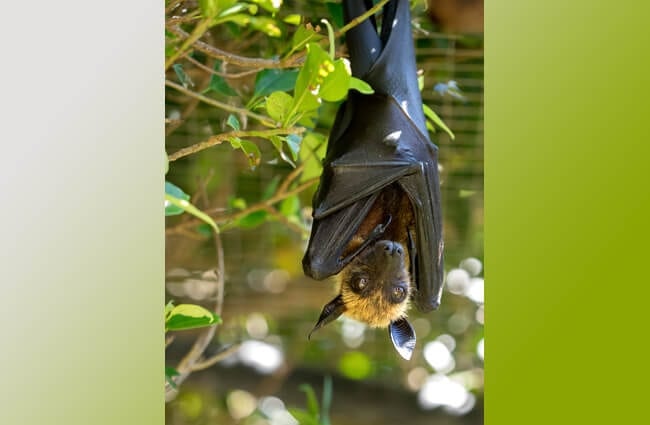
Where to Find These Aerial Gardeners: Habitat and Distribution
Flying Foxes are predominantly found in tropical and subtropical regions of Asia, Australia, East Africa, and numerous oceanic islands in the Indian and Pacific Oceans. Their preferred habitats are diverse, ranging from rainforests and mangroves to eucalyptus forests and even urban parks and gardens, especially where food sources are abundant.
These bats are highly adaptable, but they generally seek out areas with:
- Abundant Food Sources: Fruit-bearing trees and flowering plants are essential.
- Safe Roosting Sites: Large trees with dense canopy cover, often near water, provide protection from predators and the elements. Some species also roost on cliffs or in caves.
- Warm Climates: They are sensitive to cold and prefer warmer temperatures.
For an animal lover hoping to spot a Flying Fox in the wild, the best approach is to visit their known habitats during dusk or dawn. Look for large colonies hanging upside down in trees during the day, often making a considerable amount of noise. As twilight descends, observe the skies for their distinctive silhouettes as they leave their roosts to forage.
The Fruitarian Feast: What Flying Foxes Eat
As their common name “fruit bat” suggests, Flying Foxes are primarily frugivores, meaning their diet consists mainly of fruit. However, their palate is more refined than just fruit; they are also significant nectarivores and pollinivores.
Their diet typically includes:
- Fruits: Mangoes, figs, bananas, lychees, and various native rainforest fruits are favorites. They often consume the juice and soft pulp, spitting out the fibrous material and seeds.
- Nectar: They feed on the nectar of many flowering plants, especially those that bloom at night, such as eucalyptus and some rainforest trees.
- Pollen: While feeding on nectar, they inadvertently consume pollen, which provides essential protein.
This specialized diet makes them crucial for the health of their ecosystems, a topic we will explore in more detail later.
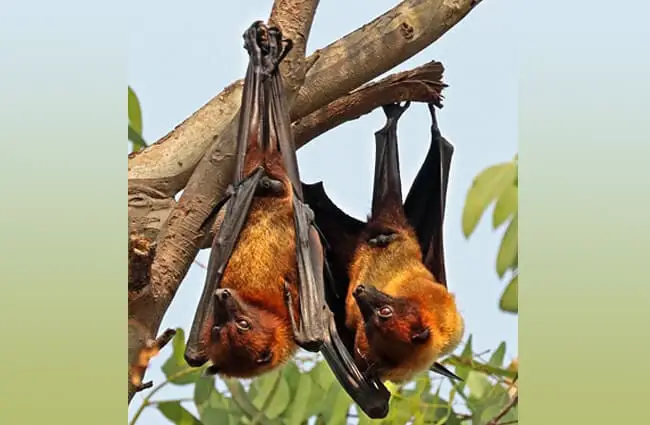
Fascinating Facts About Flying Foxes
These creatures are full of surprises. Here are some intriguing facts:
- Not True Foxes: Despite the name, they are bats, not canids. Their facial features simply resemble those of a fox.
- Giants of the Bat World: They hold the record for the largest bats, with some species having impressive wingspans.
- Excellent Vision: Unlike microbats, Flying Foxes have excellent eyesight, especially in low light conditions, which they use for navigation and foraging.
- Strong Sense of Smell: Their powerful olfactory senses help them locate ripe fruits and nectar-rich flowers from a distance.
- Social Creatures: They live in large colonies, sometimes numbering in the tens of thousands, roosting together during the day.
- Long-Distance Travelers: Some species undertake significant seasonal migrations in search of food.
- Upside-Down Sleepers: They roost upside down, a common bat trait, using specialized tendons in their feet that lock their grip without muscular effort.
- Heat Regulation: In hot weather, they fan themselves with their wings, lick their fur, and even pant to cool down.
A Deeper Dive: Biology, Evolution, and Life Cycle
For the aspiring zoologist or the curious student, understanding the intricacies of Flying Fox biology offers a richer appreciation of these animals.
Evolutionary History and Classification
Flying Foxes belong to the order Chiroptera, the only mammals capable of sustained flight. Within this order, they are part of the suborder Megachiroptera, or megabats. The evolutionary split between megabats and microbats is a subject of ongoing scientific debate, but it is clear that Flying Foxes represent an ancient lineage.
Key evolutionary points:
- Ancient Lineage: Megabats are thought to have diverged early in bat evolution.
- Lack of Echolocation: Unlike microbats, which evolved sophisticated echolocation for navigating in darkness and hunting insects, megabats primarily rely on vision and smell. This suggests a different evolutionary path, possibly linked to their fruit and nectar diet.
- Wing Structure: Their wings are essentially modified forelimbs, with elongated fingers supporting a membrane of skin. This structure is highly efficient for long-distance flight.
The genus Pteropus itself contains numerous species, each adapted to its specific environment, showcasing the remarkable diversity within this group.

The Rhythms of Life: Mating, Reproduction, and Development
The reproductive cycle of Flying Foxes is fascinating, often synchronized with seasonal food availability.
Mating and Gestation:
- Mating typically occurs at specific times of the year, varying by species and region.
- Males establish territories within the colony, attracting females with vocalizations and displays.
- Gestation periods can range from 4 to 6 months, depending on the species.
Birth and Pup Rearing:
- Females usually give birth to a single pup, though twins are rare.
- Pups are born relatively well-developed, with open eyes and a covering of fur.
- The newborn pup clings tightly to its mother’s fur, often riding along during foraging flights for the first few weeks or months.
- Mothers nurse their young for an extended period, sometimes up to 5-6 months, providing rich milk.
- As they grow, pups begin to explore their surroundings, practicing flight and foraging behaviors within the safety of the colony.
- Sexual maturity is reached between 1 and 2 years of age.
Lifespan: In the wild, Flying Foxes can live for 10 to 15 years, and significantly longer in captivity, sometimes exceeding 20 years.
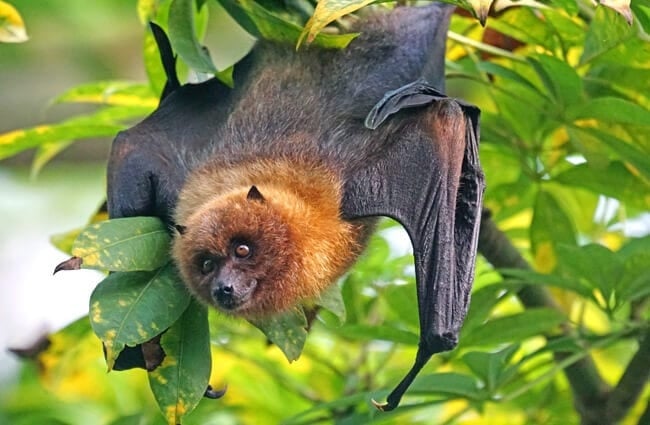
Ecosystem Architects: Flying Foxes and Their Environment
The ecological contributions of Flying Foxes are immense, making them keystone species in many tropical ecosystems.
Pollination and Seed Dispersal: The Forest’s Best Friends
Flying Foxes are often referred to as “the farmers of the forest” due to their critical roles:
- Pollination: As they feed on nectar, pollen adheres to their fur. When they visit other flowers, they transfer this pollen, facilitating cross-pollination for numerous plant species, including many economically important fruit trees like durian and kapok. Many night-blooming flowers have evolved to be bat-pollinated, often being pale in color and having strong, musky scents to attract their nocturnal visitors.
- Seed Dispersal: After consuming fruits, Flying Foxes fly considerable distances before excreting the seeds, often intact and ready for germination. This process is vital for forest regeneration, helping to spread plant species to new areas and maintain genetic diversity. Without them, many tropical forests would struggle to recover from disturbances or expand their range.
Their ability to cover large distances makes them far more effective seed dispersers than many ground-dwelling animals, especially for plants that rely on long-range dispersal.
Interactions with Other Animals
In their natural habitats, Flying Foxes interact with a variety of other species:
- Predators: While their large size offers some protection, young or sick bats can fall prey to large birds of prey (eagles, owls), snakes, and arboreal predators like civets or monitor lizards.
- Competition: They may compete with other frugivores and nectarivores, such as birds and monkeys, for food resources, though their nocturnal habits often reduce direct competition.
- Symbiotic Relationships: Their role as pollinators and seed dispersers highlights a mutualistic relationship with countless plant species.
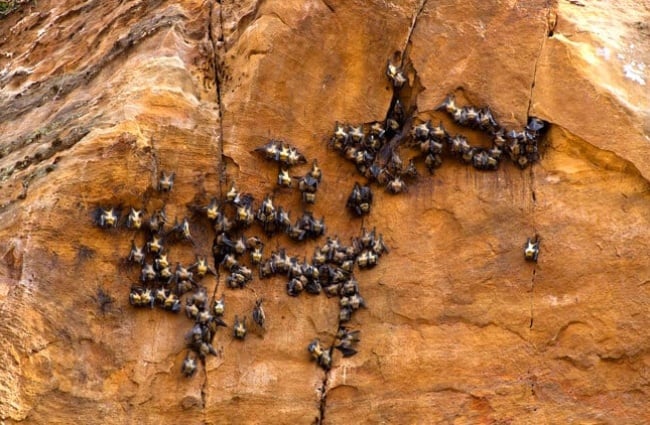
Flying Foxes and Humanity: Culture, Conflict, and Conservation
The relationship between Flying Foxes and humans is complex, encompassing cultural reverence, agricultural conflict, and significant conservation challenges.
Cultural Significance
In many cultures, particularly in Southeast Asia and the Pacific Islands, bats hold various symbolic meanings. While some traditions view them with apprehension, others see them as symbols of good fortune, fertility, or even as sacred animals. Their nocturnal habits and unique appearance have woven them into folklore and local legends, often as mysterious or powerful beings.
Human Interaction and Conservation Challenges
Despite their ecological importance, Flying Foxes face numerous threats, largely due to human activities:
- Habitat Loss and Fragmentation: Deforestation for agriculture, logging, and urban expansion destroys their roosting sites and foraging grounds.
- Hunting: In some regions, Flying Foxes are hunted for food or traditional medicine, leading to significant population declines.
- Climate Change: Extreme heat events, exacerbated by climate change, can cause mass mortality events in colonies, as bats succumb to heat stress.
- Human-Wildlife Conflict: When natural food sources diminish, Flying Foxes may raid fruit orchards, leading to conflict with farmers who may resort to culling.
- Disease Transmission: Flying Foxes are natural reservoirs for certain viruses, such as Hendra virus and Australian Bat Lyssavirus (ABLV). While transmission to humans is rare, it can be severe. This aspect is crucial for public health and wildlife management.
Conservation Efforts: Protecting Flying Foxes involves a multi-faceted approach:
- Habitat Protection: Establishing protected areas and reforestation projects.
- Community Engagement: Educating local communities about their ecological role and promoting coexistence strategies.
- Research: Studying their movements, diet, and health to inform conservation plans.
- Rehabilitation: Rescuing and rehabilitating injured or orphaned bats.
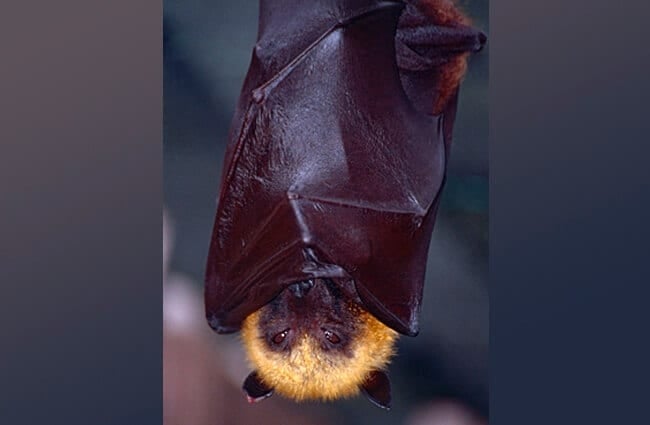
Practical Insights: Encountering and Caring for Flying Foxes
Understanding how to interact with Flying Foxes, whether in the wild or in captivity, is vital for their well-being and human safety.
For the Hiker: Encountering Flying Foxes in the Wild
If you encounter Flying Foxes during your outdoor adventures, remember these guidelines:
- Observe from a Distance: Admire them from afar. Do not approach or attempt to touch them, especially if they appear distressed or on the ground.
- Respect Roosting Sites: If you find a colony, keep noise levels down and avoid disturbing them. Sudden disturbances can cause them to abandon their roosts.
- Never Touch a Bat: This is the most critical rule. Bats can carry diseases, including Lyssavirus, which can be transmitted through bites or scratches. If you find an injured or grounded bat, contact local wildlife rescue organizations. They are trained and vaccinated to handle these animals safely.
- Educate Others: Share your knowledge about their importance and the need for respectful observation.
For the Zookeeper: Caring for Flying Foxes in Captivity
Caring for Flying Foxes in a zoological setting requires specialized knowledge and dedication to their welfare.
Essential Tasks:
- Dietary Management: Provide a diverse diet of fresh fruits (e.g., melon, apple, banana, papaya, mango), vegetables, and a specialized nectar/pollen substitute. Ensure a balanced nutritional intake, often supplemented with vitamins and minerals.
- Enclosure Design:
- Space: Large enclosures are crucial to allow for flight and exercise.
- Climbing Structures: Provide branches, ropes, and netting for climbing and roosting.
- Roosting Areas: Offer varied roosting options, including sheltered spots for privacy and rest.
- Temperature and Humidity Control: Maintain appropriate tropical conditions, as they are sensitive to cold.
- Social Structure: Flying Foxes are highly social animals. They should be housed in groups to meet their social needs, mimicking natural colony dynamics.
- Health Monitoring: Regular veterinary checks, including vaccinations (e.g., for Lyssavirus in endemic areas for staff safety), parasite control, and daily observation for signs of illness or injury.
- Enrichment: Offer environmental enrichment to stimulate natural behaviors, such as puzzle feeders, novel scents, and rotating fruit displays.
- Hygiene: Maintain strict hygiene protocols in enclosures to prevent disease transmission, both to the bats and to staff.
Things to Avoid:
- Inadequate Space: Small enclosures lead to stress and health issues.
- Monotonous Diet: A lack of dietary variety can lead to nutritional deficiencies.
- Isolation: Housing a single Flying Fox without conspecifics can cause psychological distress.
- Direct Handling Without Protection: Always use appropriate personal protective equipment (PPE) when handling bats to prevent bites, scratches, and potential disease transmission.
- Sudden Disturbances: Avoid loud noises or sudden movements that can startle the colony.
Conclusion: Guardians of the Canopy
Flying Foxes are far more than just large bats; they are indispensable components of tropical ecosystems, performing vital services that ensure the health and regeneration of forests. From their unique evolutionary journey to their complex social lives and their critical role as pollinators and seed dispersers, these creatures embody the intricate web of life. Understanding their biology, appreciating their ecological contributions, and recognizing the challenges they face are crucial steps towards ensuring their survival. By fostering coexistence and supporting conservation efforts, we can help these magnificent aerial gardeners continue their essential work, safeguarding the future of our planet’s precious forests for generations to come.

![Red Angus Closeup of a beautiful Red Angus cowPhoto by: U.S. Department of Agriculture [pubic domain]https://creativecommons.org/licenses/by/2.0/](https://animals.net/wp-content/uploads/2020/03/Red-Angus-4-238x178.jpg)




![Red Angus Closeup of a beautiful Red Angus cowPhoto by: U.S. Department of Agriculture [pubic domain]https://creativecommons.org/licenses/by/2.0/](https://animals.net/wp-content/uploads/2020/03/Red-Angus-4-100x75.jpg)

